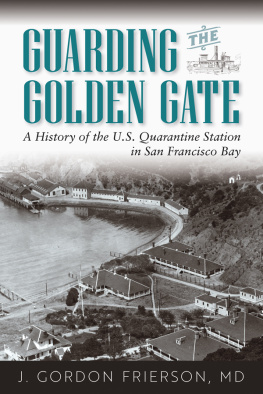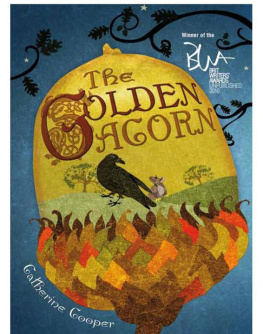Introduction
CALIFORNIA'S name was associated with stories of romance and adventure as far back in history as the year 1510. In that year Ordonez de Montalvo, a Spaniard, wrote a romance called The Adventures of Esplandian in which he mentioned a magic island, California, situated "on the right hand of the Indies, very near the Terrestrial Paradise."
This island, whose name came from two Greek words, kallos (beauty) and ornis (bird), was said to be an enchanted place, the air fragrant with the perfume of rare flowers and vibrant with the music of bright-plumaged birds. The hills and valleys were rich with gold, silver, and precious stones. The ruler of California was a beautiful Amazon Queen, Califia. She and her warriors were guarded by giants so tall that their shoulders rose over the mountain tops. Winged griffins high on the crags above the seashore frightened away all but the bravest and boldest sailors. Seamen reported that Califia and her followers wore armor of gold, that their spears were inlaid with pearls and diamonds, that even the harness of the wild beasts they tamed to ride was made of ropes of precious stones.
Montalvo's romance became so popular in Spain and Mexico that many readers of an adventurous nature began to believe it worth their while to go in search of this fabulous island. Among those who heard and half believed the romantic tale was Hernando Cortes. By the year 1521 he had conquered the Aztecs of Mexico and forced them to become the subjects of Spain. He was now looking over the western seas for new worlds to conquer. He firmly believed that somewhere in the direction ascribed to California there was a rich and prosperous country.
In his shipyards at Zacatula, Cortes built and equipped four ships to be sent out under trusted captains. He then wrote to the Emperor, Charles II of Spain, recounting the story of California and assuring him that should such an island be found in the forthcoming voyage of discovery, its finest gold and richest gems would be brought back as tribute to His Majesty. The first expedition failed of its mission.
Ship after ship sent to search the coast of the Pacific met with disaster through mutiny or shipwreck. Undaunted by these losses, Cortes continued to build and send forth others at his own expense.
In 1533 at his port of Tehuantepec he superintended the construction of two vessels, a flagship, La Conception, and a smaller vessel, the San Lazaro. La Conception was commanded by Bezerra de Mendoza, and with him went two Franciscan Fathers to convert any natives they might encounter. In October the two ships sailed away together, but shortly after they left port, a storm separated them and they never met again.
Bezerra continued on his course in La Conception, little thinking that a secret plot was being made against him. At Jalisco as he lay asleep, he was murdered by Fortuno Ximenes, his chief pilot, who then called together his own confederates and took command. Fortuno set ashore Bezerra's friends, including the Franciscan Fathers, then sailed away from the coast, and fled toward unknown northern seas.
In their wanderings the adventurers found no enchanted island, but they did discover a land where the natives showed them pearls and brightly colored stones. This was the peninsula we now know as Lower California. The sailors, as Christopher Columbus, Balboa, and Cortes had done before them, called the natives Indians.
In 1534 they reached a bay where Fortuno with twenty others went ashore. There swift vengeance for his crime of mutiny overtook him.
He and his companions were slain by the Indians. The few who had remained on the ship turned back at once to Jalisco, where they told their story and reported the discovery of a new country. The tale lost nothing in the telling. They declared the place to be a veritable paradise, well peopled, its coasts abounding with pearls of enormous size.
It is to be hoped that this account convinced Cortes that his efforts had not been in vain, for while Fortuno Ximenes was the discoverer of Baja California, it was Cortes, the dreamer, whose vision and perseverance had made that discovery possible. It was the confidence inspired by his expeditions which eight years later led to the successful explorations of Juan Rodriguez Cabrillo, who followed the coast almost as far north as the hidden entrance to the bay later named for St. Francis of Assisi. Hernando Cortes has been well named the Father of California.
Chapter I. Indian and Elk
THE real California had no giants in her mountains. The grizzly bear and the wide-antlered elk were her guardians. Although no winged griffins perched above her shores, eagles and snowy pelicans flew among the crags. Sea lions, otters, whales, and seals lived in the ocean below. No Amazon Queen and her women warriors dwelt in the valleys that lay between the two great mountain ranges, but there Indian chiefs ruled tribes which numbered many thousands.
These brown children of the sun did not know that their country was a thousand miles long. They did not dream that they were lords over one hundred million acres of rich land, vast forests, peaceful lakes, and swift-moving streams. They did know how to build houses for shelter, how to catch wild animals for food, and how to make clothing from skins and furs. They divided the year into spring, summer, the fall of the leaf, and winter, and gave to the months such names as the Hot Month, the Month of Cold, and the Month of Rain. They greeted the appearance of each new moon with joyful exclamations.
The Tulomos tribe with their chief lived on the shore of a landlocked bay facing the narrow opening we know as the Golden Gate.
They called this passage between two great rocks "Yulupa (ee-oo-loopa), the place where the sun plunges into the ocean." The natives worshiped the sun as the source of life and believed that when good Indians died, they went to a happy land beyond the sunset.
To the north and east of the village lay the bay, where elk in great numbers came to swim at sunrise. To the south were wooded hills -and valleys where roamed grizzly bears, deer, and other wild animals.
The village .lay sheltered by a hill at the foot of which was a fishing.place for the balsas. These were small boats made of elk hide stretched over stout rushes. The Tulomos called their village the Place of the Good Herb, because of the fragrant trailing mint vine that covered the ground.
This vine had many uses. The women and children gathered and dried the leaves to make tea. The men and boys, before going into the hills to hunt deer, crushed the fresh leaves and rubbed them on their bows and arrows so that the game would not scent the hunter.
The Indian boys hunted in pairs, carrying their bows and arrows in deer-skin bags. With old deer heads fastened to their own, they crept on all fours until near enough to shoot the browsing animals.
The dwellings in the village were made like those of other tribes around the bay. The men would dig a large cellar-like opening from twelve to thirty feet around and three feet deep. Within this circle posts were planted, forked at the top. On them rested other poles which reached from one to the other. The space between the posts was filled with rule rushes against which the earth was firmly banked outside. The roofs were dome shaped and thatched with rushes woven together and covered with a foot-thick layer of earth. This formed a protection which kept out the heaviest rains. Inside, the center of the earthen floor held a pit for the fire, and the smoke escaped through a hole in the roof. Around the inside walls, wide shelves lined with rushes served as beds.








